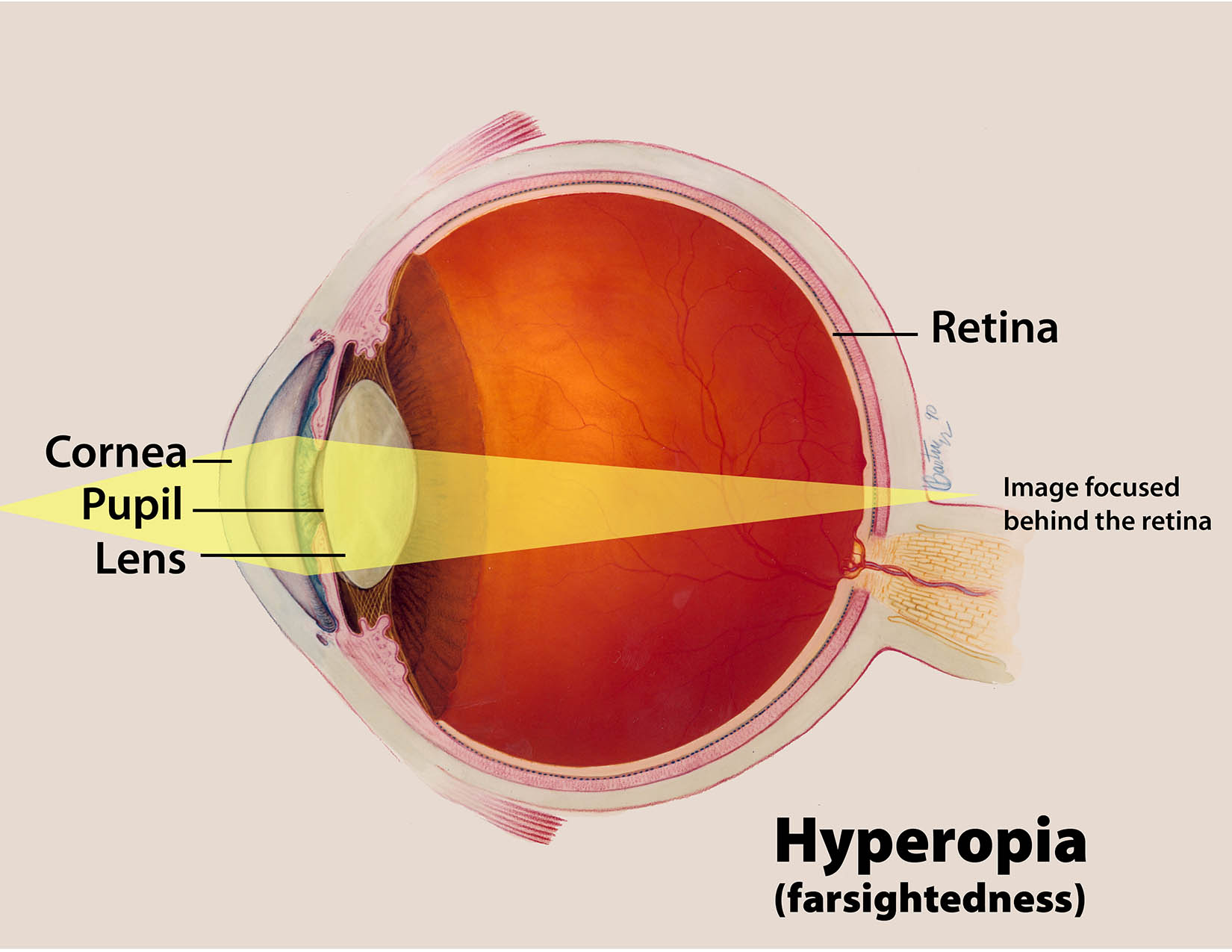
Refractive Errors
Refractive errors occur when the eye’s shape prevents light from focusing correctly on the retina, leading to blurred vision.
This can happen if the eye shape is too long or short, if the cornea is irregularly shaped, or if the lens cannot properly focus light. Common types of refractive errors include long-sightedness (hyperopia), short-sightedness (myopia), and astigmatism.
These conditions affect how we see objects at various distances, but they can usually be corrected with glasses, contact lenses, or refractive surgery.
Long-sightedness (hyperopia)
Some people have eyes that are too short, which means the light focuses behind the retina at the back of the eye (they are long-sighted). This means that they have to focus more than they would if they have perfect sight, particularly on things that are close up.
Normally, light is focussed by the cornea and lens to form a sharp image on the retina.
Long-sightedness occurs when the eyeball is slightly too short
… so that objects are in focus behind the retina at the back of the eye.
This may result in blurred vision when looking in the distance
…and particularly when looking at near objects and reading.
When we are young, we overcome long-sightedness by bulging out the lens in the eye.
However, as we get older, the lens gets harder and can no longer bulge out enough.
Long-sightedness can be corrected by glasses or contact lenses.
Short-sightedness (myopia)
Other people have eyes that are too long, so the light focuses in front of the retina (they are short-sighted). This means that they cannot see things clearly if they are far away from them (such as the TV or board at school).
Normally, light is focused by the cornea and lens to form a sharp image on the retina.
Sometimes the eyeball is too long for the shape of the cornea
… so the light comes to a focus before it reaches the retina.
As a result, objects in the distance are blurred
… although close objects are usually clear.
Short-sightedness can be corrected by glasses or contact lenses.
These lenses correct the vision so that distant objects are clear once again.
Both conditions can run in families and both are easily treated with glasses.
Astigmatism
Astigmatism occurs when the cornea or lens isn't a perfectly curved shape. Many people who wear glasses have some degree of astigmatism.
The cornea should be regularly curved like the surface of a football, but in cases of astigmatism it has an irregular curve, more like the shape of a rugby ball. This means that light rays entering the eye aren't focused properly, creating a blurred image.
Left uncorrected, astigmatism can cause headaches, eye strain and fatigue (tiredness), particularly after doing tasks that involve focusing on something for long periods, such as reading or using a computer.
In cases where your vision is significantly affected by astigmatism, glasses or contact lenses can be used to correct it.



